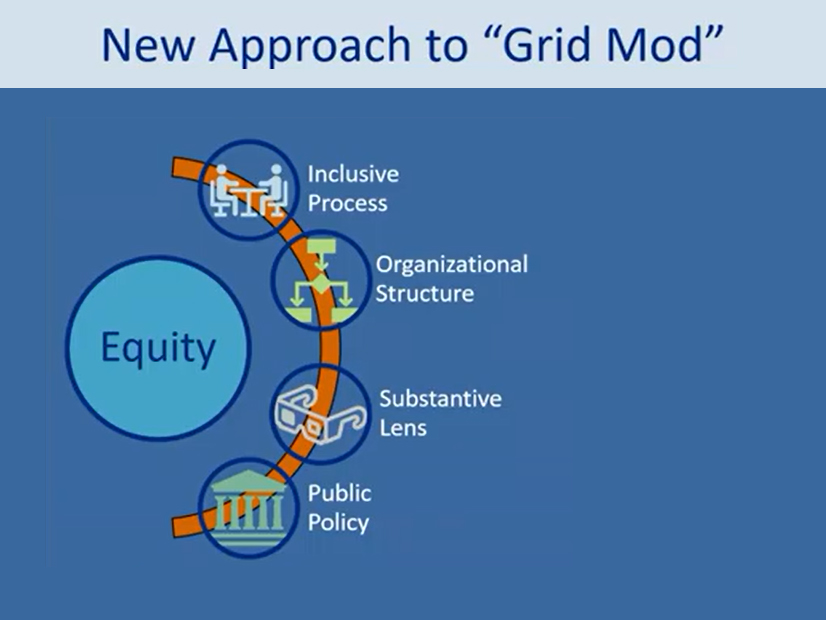Two years ago this month, the Connecticut Public Utilities Regulatory Authority approved a sprawling plan to modernize the state’s electric grid.
PURA established four objectives for its Equitable Modern Grid framework centered on Connecticut’s green economy, decarbonization, energy affordability in underserved communities and reliability. It also identified 11 near-term tracks to investigate in three phases.
During a recent webinar to recap progress to date, including three final decisions among the 11 tracks, PURA Chair Marissa Gillett said that while Connecticut’s electric infrastructure continues to age, there is a concurrent reliance on it “to meet our daily needs.”
There is an emphasis on equity that permeates the initiative, including the final decisions on electric storage and zero-emissions vehicles, which contain incentive adders for underserved communities.
“Equity is an important lens that we approach this process with,” Gillett said. “And while I think as an industry, we are starting to do a better job thinking about equitable outcomes, what I think we need to do more of is think about how we inject equity into the process of developing and pursuing those initiatives.”
Gillett added what she said might seem like a commonsense observation: equitable outcomes are borne from fair access to developing them.
For example, PURA was directed through a bill passed by the General Assembly earlier this year to establish a nine-year electric storage program starting next year, which targets deployment of at least 580 MW and supports the state’s goal to reach 1,000 MW by the end of 2030. Storage systems will be compensated through an upfront incentive of $7,500 administered by the Connecticut Green Bank and performance-based incentives provided by Eversource Energy and United Illuminating. There is also a target to deploy 40% of storage in low-to-moderate income communities.
PURA also set up a nine-year program for zero-emissions vehicles starting in 2022, which includes a study by the Rocky Mountain Institute to identify how to best address and offer electrified transportation mobility options for low-to-moderate-income communities. Stefanie Keohane, supervisor in PURA’s clean and affordable energy unit, said there is “recognition and acknowledgment” that many in Connecticut may not have personal vehicles or be able to purchase or lease an electric vehicle. Still, there should be equity work that ensures “that the benefits of transportation electrification are shared among all those in Connecticut.”
Despite PURA identifying 11 tracks for the Equitable Modern Grid framework, Gillett said it is not “an exhaustive list.”
“There could have easily been hundreds, if not thousands, of tracks in [grid modernization], and we recognize that we haven’t identified the last of the work,” Gillett said.
Ambitions do not restrict PURA although its current staffing levels offer “constraints,” according to Gillett. Stakeholder engagement in PURA’s public proceedings and constructive feedback through public comments are also critical, though Gillett acknowledged one underreported aspect of that commitment, which is time, especially with non-traditional stakeholders.
“Stakeholder fatigue is a very real challenge that I think is not spoken about enough, and with our desire to emphasize the engagement from non-traditional stakeholders, we want to be cognizant of those limited resources as well,” Gillett said.


